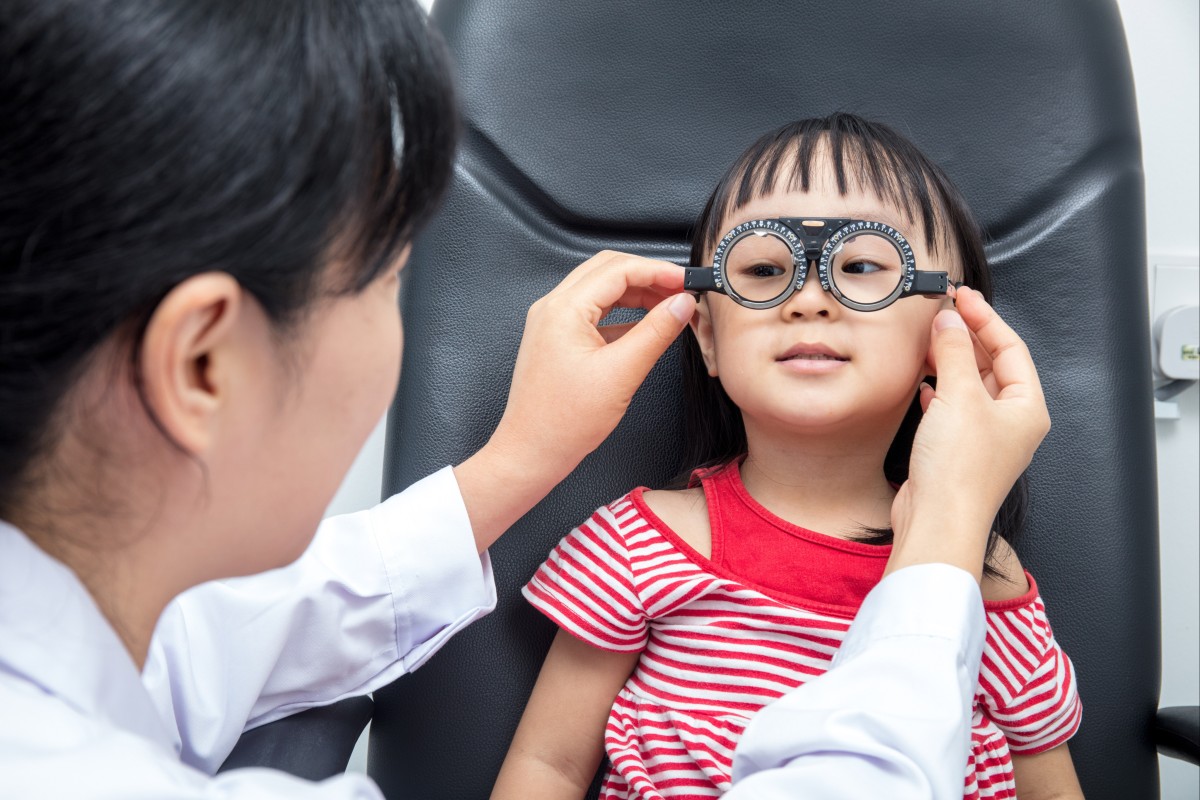
- Developed by the Hoya Corporation, the Miyosmart lenses deploy hundreds of tiny lenses to counteract a condition that worsens myopia, or nearsightedness
- Check out our graphic below to learn more about how myopia affects your eyesight
 Research has suggested that the percentage of people affected by myopia worldwide could surge from 27 per cent in 2010 to 52 per cent by 2050. Photo: Shutterstock
Research has suggested that the percentage of people affected by myopia worldwide could surge from 27 per cent in 2010 to 52 per cent by 2050. Photo: ShutterstockTwo years ago, a teacher noticed that Paul, a 10-year-old boy, could no longer see anything written on the board at the front of the class.
After some eyesight check-ups, Paul was found to be one of the soaring number of children worldwide with myopia, also known as nearsightedness (see graphic). People with the eye condition have difficulty seeing distant objects but can see near objects clearly.
But Paul’s ophthalmologist in the western French city of Nantes had some good news: specially designed glasses had just become available that could slow down the progression of Paul’s myopia.
“After a year, the results were quite positive because his eyesight seemed to have stabilised,” Paul’s mother Caroline Boudet told Agence France-Presse.
Previous research has suggested that myopia progresses 60 per cent more slowly in children wearing the “Miyosmart” glasses compared to those wearing normal prescription glasses.
A six-year clinical study also found that the disorder did not start speeding up again if the children stopped using the glasses.
Hong Kong children with dyspraxia need more resources to move forward
Developed by Japan’s Hoya Corporation, the Miyosmart lenses, which also function as normal glasses to help children see clearly, have been available in many European countries including France and the United Kingdom for around two years.
Myopia occurs when there is too much distance between the cornea and retina, making far-off objects appear blurry.
The Miyosmart glasses deploy hundreds of tiny lenses to counteract peripheral hyperopic defocus, a condition in which light falls behind the retina, causing the eyeball to get longer and making myopia worse.
Children with at least one nearsighted parent are more likely to develop the condition. However, no one in Paul’s family is myopic. Environmental rather than genetic causes are believed to be behind the steep rise in cases.
Children spending more time indoors, being exposed to less natural light, and looking at nearby objects such as screens have likely brought about what has been called “the myopia generation,” according to researchers.
French ophthalmologist Jimmy Chammas said the new glasses were “a real gain for children”. “The myopia of those who wear these glasses deteriorates half as much as we would have expected, if at all,” he said.
Research has suggested that the percentage of people affected by myopia worldwide could surge from 27 per cent in 2010 to 52 per cent by 2050.
What are some other common eye conditions similar to myopia?
Other than myopia, there are also eye conditions called hyperopia and astigmatism.
Hyperopia, or farsightedness, is a vision condition in which distant objects are usually seen more clearly than close ones. Astigmatism is a condition that can make one’s vision blurred, just like myopia.
Astigmatism occurs when our eye’s lens or front surface is irregular or cylindrical. Myopia occurs when the eyeball is too long, or the cornea is too steeply curved.
Astigmatism, hyperopia and myopia can all be improved with glasses or contact lenses. One way of permanently correcting some of these eye conditions is Lasik eye surgery, in which a special type of cutting laser is used to change the shape of the cornea to improve vision. However, it is not suitable for everyone.
To minimise the worsening of these eye conditions, we should limit our screen time, keep at least an arm’s length from electronic devices, ensure there is proper lighting when we are reading or working, and take breaks often to reduce eye fatigue.